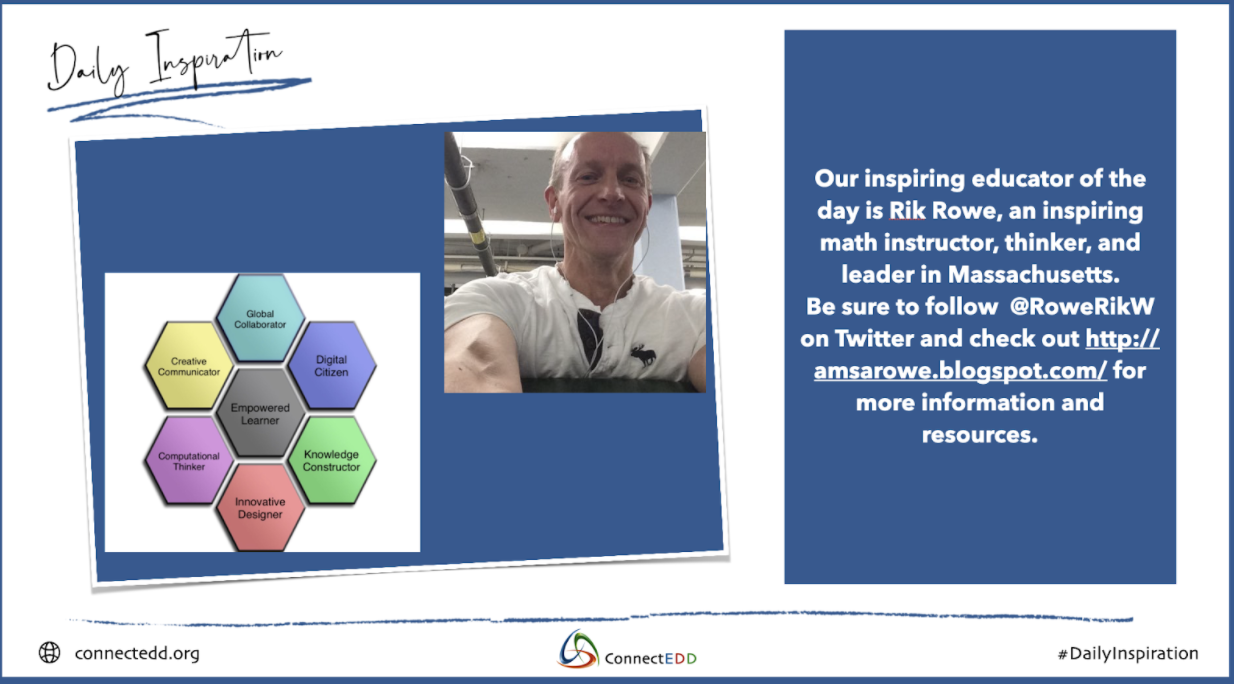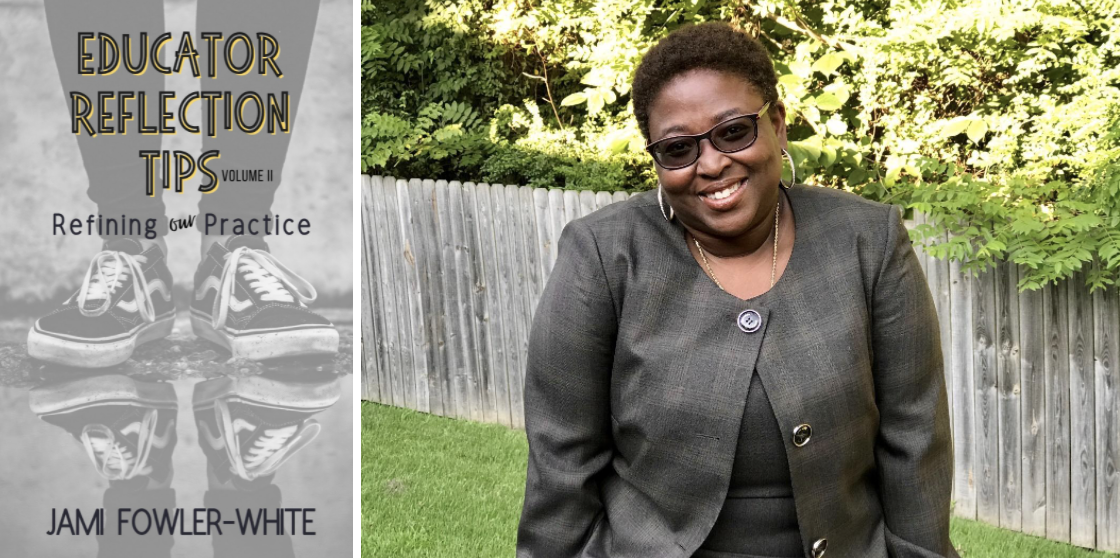CONNECTIONS: When Is It Okay to Break the Rules
“I am free, no matter what rules surround me. If I find them tolerable, I tolerate them; if I find them too obnoxious, I break them.”
Robert Heinlein
The majority of educators I know tend to be rule followers by nature and there is certainly something to be said for establishing guidelines in our schools to ensure safety and optimize student and staff performance. There are other times, however, when we must serve as disruptors, recognizing that a rule we may have in place serves no legitimate purpose or is even counterproductive to what we are attempting to accomplish. Recently, I found myself reflecting on two such instances that are of a totally different nature but equally representative of rules gone awry.
One instance related to school safety. At a school I visited this past year, I was walking down a busy hallway during a class change. As I turned a corner by a stairwell, a door opened suddenly and struck me. A student had come down the stairs and flung open the door, inadvertently striking me as I passed by. The school counselor, who also happened to be walking by, stopped to make sure I was OK and said, “This happens all the time. We have a sign on the door warning people to open the door carefully, but it doesn’t do much good.” In examining the area, the solution was rather obvious: keep the stairwell doors open or perhaps remove them entirely. I suggested as much to the counselor. She agreed that this was the logical thing to do and informed me that they had already tried to make that change only to be told it was against the safety code. School and local fire officials had designated the stairwell as some sort of safe haven in the event of an emergency which, for some reason, dictated that the doors remain closed. I raised the issue myself with these people and was rebuffed. I pointed out that students and staff members were getting hurt on a regular basis by following this rule. I also inquired as to whether any emergency had ever occurred in the fifty-plus years of the school’s existence which resulted in the stairwell being used as a safe haven. Not surprisingly, the answer was no, but the doors were to remain closed all the same, just in case. If not so maddening, it would have been humorous: in the name of “safety,” we followed a rule which made the school much less safe for the students and staff walking the halls of the school on a daily basis.
A much different--and possibly even more important--example has to do with grade acceleration. Although it may not be a formal “rule,” I have found that allowing a child to skip a grade or subject is generally frowned upon and rarely allowed. Every student we serve, it seems, must pass through every stage of the PreK-12 journey without skipping a step in the process regardless of their social, emotional, academic, and physical status. In over thirty years of public school service, I can count on one hand how many students I came in contact with who were allowed to skip a grade. In each instance, the recommendation to do so was initially met with stern opposition; yet also in each instance, the student who was allowed to skip a grade thrived once they were moved ahead. The argument for keeping a student in, say, second grade, when all indications are that the child would be better served by moving her into third grade are no more compelling than the argument for keeping stairwell doors closed even when it means that students and staff are regularly clonked on the head by an opening door. In fact, the argument pretty much boils down to: “But, that’s the way we have always done it.”
I am generally not opposed to rules. In our schools, especially, it makes perfect sense to have clear rules in place to ensure student safety and to maximize student and staff performance. Yet, there must be a purpose behind the rules we establish. And the purpose must be something larger than, “That’s just the way we have always done it.” If the “way we have always done it” is getting the results we desire, we should probably keep doing it. If, instead, “the way we have always done it” is harming people or holding them back from performing at their optimal level, we must heed the words of Heinlein and break such “obnoxious'' rules. What are some other rules we should break in our schools? We are interested in your thoughts. Knowing when to follow the rules and when to be a disruptor and break the rules are important ways we create a positive and productive culture in our schools.
Thanks to all educators reading this for the amazing work you are doing during these challenging times. As always, Teach and Lead with Passion...
Jeff and Jimmy
DAILY INSPIRATION EDUCATOR
(Please let us know about an inspiring educator you think we should highlight in a future newsletter by completing this brief form!)
FEATURED BOOK!
Educator Reflection Tips Volume II: Refining Our Practice by Jami Fowler-White (Twitter: @JjJj821)
The Educator Reflection Tips book series is designed to deepen the knowledge and increase the skill set of professional educators. Each book in this series includes a multitude of resources, along with probing reflection questions designed to provoke readers to think deeply about their classroom experiences, past and present, and to take specific actions aimed at refining and improving their craft which will enhance teaching and learning in our schools. After reading this book, you will begin to take charge of your own professional growth. No longer will you depend solely on the traditional method of waiting on feedback from administrators and colleagues. You will be equipped with instruments to routinely consider where you are on the self-reflection continuum and use the tools provided to take action steps for improvement. Volume II in the series takes readers on a deep dive to determine habits of effectiveness in these critical areas:
Classroom Competence
Critical Literacy
Cyber Connection
Classroom Culture
The ten reflection tips highlighted in Volume II invite readers to embark upon a journey of contemplation, heightened awareness, and action-oriented transformation. Each Reflection Tip is uniquely crafted to empower educators to think critically about key factors which influence student outcomes. Learn More Here!
FEATURED BOOK!
Permission to be Great: Increasing Engagement In Your School by Dan Butler (Twitter: @danpbutler)
Educator burnout is threatening the well-being of our society. In addition to negatively impacting the social, emotional, and academic growth of the students we serve and the quality of our educational system overall, it also comes with financial consequences for our nation as a whole. Many 21st century educators are becoming increasingly stressed trying to meet the countless demands upon them, demands that promote burnout and jeopardize workforce retention. Emotional exhaustion, negativity, and teacher attrition have reached alarming levels, threatening quality instruction and, ultimately, student achievement. Many factors contribute to job burnout. The primary causes are mismatches between people and their work environment. These mismatches include:
Work overload;
Lack of autonomy;
Insufficient encouragement, recognition, or appreciation;
Lack of positive relationships;
Fairness; and
Value conflicts between the individual and the organization.
The greater the mismatch between each area of the school setting and the educator, the greater the risk of educator burnout. Although the negative consequences of burnout are overwhelming and very real, it does not have to be this way. With intentional approaches and relatively simple tactics, educators can extinguish burnout and increase engagement in their school settings. In Permission to be Great, Dan Butler articulates success stories, proven leadership practices, engagement enhancers, and reflective questions to lead your school or district toward positive change. This book provides practical and specific ideas for combating burnout behaviors and, instead, initiating higher levels of energy, involvement, and efficacy among educators in our schools. Now that we know the truth about burnout, it is time to embark on the path toward authentic engagement; our educators--and our students--deserve it! Learn More Here
CONNECTEDD’S TAKEAWAYS:
Thought for the Day: “The foolish man seeks happiness in the distance; the wise grows it under his feet." James Oppenheim
Teaching Technique to Try: News Article Analysis: Use this teaching strategy to help students identify and analyze the key characteristics of the three most common types of news articles: straight news, feature, and opinion. This strategy helps students develop their news literacy and critical thinking skills, and it can be used with any article that fits into one of these categories. Check out this link from Facing History and Ourselves for a step-by-step process for using this technique.
Eyes On Culture: We believe that culture is a true difference maker in any classroom, school, district, or organization. As a result, we focus much of the work we do on creating and maintaining positive and productive cultures. Culture Focus: Connections. High performing schools with strong cultures are places in which educators and students alike are people who make connections with each other and who feel connected to the school and the school community. As with most culture words pertaining to the schoolhouse, making connections a priority starts with the educators in the building and happens intentionally, not by chance. Virtually all excellent educators we know want to feel connected to their fellow educators, particularly those with whom they serve in their immediate setting. Knowing their own desires in this area, they also realize the importance of ensuring that the kids they serve also feel connected to their classroom, their classmates, their school, and their teachers. Children who do not feel connected while at school–most importantly to their teachers and their classmates–are unlikely to reach their full potential and experience the true joy that comes with learning in a school setting. Educators, therefore, must ensure that every child is accounted for when it comes to checking to see if they have friends and staff members to whom they feel connected. In addition to the immediate school setting, excellent educators seek out ways to connect with people and organizations outside their immediate setting, both for their own professional learning and as a way to connect student learning to the outside world.
What are some other thoughts you have on making connections in schools and what are some examples you have seen work in classrooms and schools? Please share your thoughts about a culture and gratitude via Twitter: @ConnectEDDBooks We would love to hear from you!


